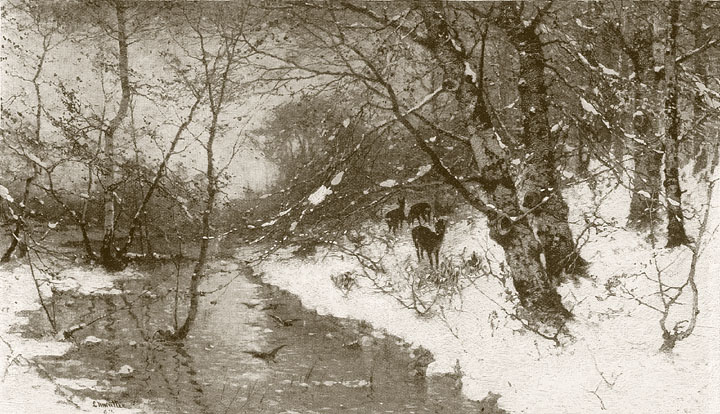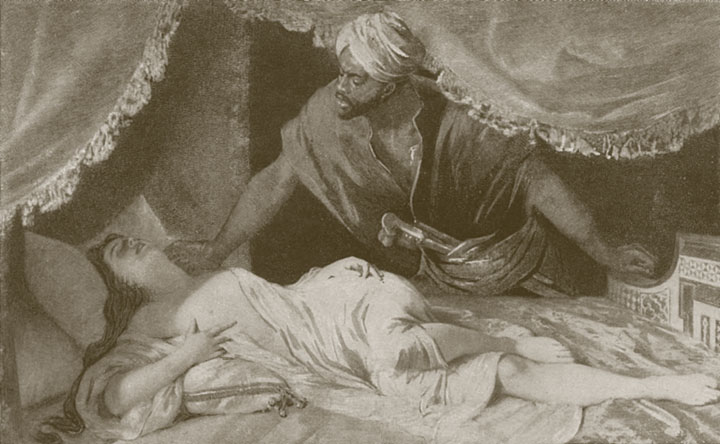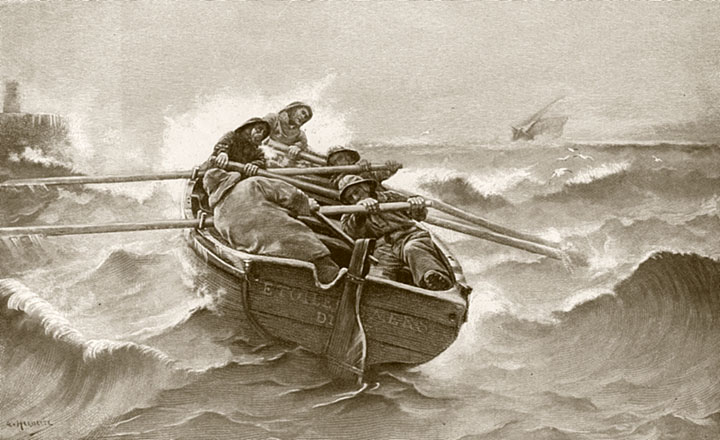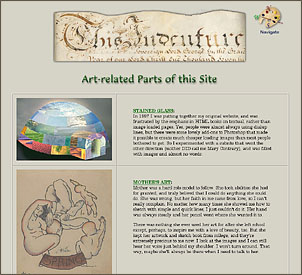ANTIQUES AND ALLEGED ANTIQUES.
Commodore Gerry's recent dispute with the custom house authorities as to the age of an imported
pair of andirons brings up the old grievance of the haunting doubt that attaches to the majority of alleged
ancient works of art. It recalls the unpleasant experience of Robert Garrett, who paid $15,000 for a
painting upon a European dealer's guarantee that it was by an old master, and was taxed a duty of $4,500 upon
it, the government experts deciding that it was less than a hundred years old, and could not claim
free entry as an antique.
Without the most complete evidence in its favor, there is always a strong presumption against the authenticity of a
challenged relic. The supply of paintings is necessarily a limited one; the demand for them
constantly increases. The important canvases whose lineages are above suspicion are safely enshrined in the great
public or semi public collections. Some European countries prohibit, by strict statues, the exportation of
ancient art works. On the other hand, forgery is easy, and has notoriously flourished for generations.
The making of copies to be sold as originals has long been an established industry in Rome, Florence, Paris,
and even nearer home. It is not strange that there should be cases, such as we have previously mentioned,
of the discovery of false credentials even in the high places of art. It is said that a canvas which held
a place of honor in the Paris Exposition of 1889 was recently proved a forgery. How then shall the rank and
file of collectors escape deception?
STRANGE STORIES FROM FRANCE.
It is not only the old masters that have attracted the talents of the copyist. Demand creates supply, and there are
wielders of the brush who stand ready to oblige the public with the work of any school that may happen to be in fashion,
contemporary or medieval.
Sometimes a painter has been more or less an accomplice in the production of spurious canvases bearing his own name. Strange stories are told, for instance, to
account for the marvelous abundance of Corots and Courbets. Corot, it is asserted, used to sign pictures brought
to him by poor and struggling artists, to enable them to find a market - a form of benevolence that showed a most reckless disregard of his
own reputation and of the public's rights.
Courbet, the communist painter, founded a sort of picture factory when he was in exile at Geneva. The French
courts had condemned him to pay the cost of restoring the Vendome Column, thrown down
by his orders during those red and ruinous days of 1871. It was his one desire to amass money to pay this huge fine, and to earn his
return to his beloved Paris. With the help of four or five industrious assistants,
he turned out salable canvases just as the elder Dumas used to produce his voluminous romances, the master's
contribution consisting of little more than his signature. When he died, with his task still incomplete,
some of his scholars had caught his style so well that they decided to continue the business at the old stand, and it is said that they have
been painting admirable Courbets ever since!
A FIFTY THOUSAND DOLLAR CANVAS.
Of course, in spite of what is said in the preceding paragraphs, pictures of the very highest class, from the brushes of the older masters,
do sometimes come to America for sale. There is one now in a New York dealer's gallery - Turner's "St. Mark's Place, Venice,"
a specimen of the great English colorist at his best, with a pedigree that is above suspicion. It was painted in 1830, and
in 1830, and last came from the Price collection, which was sold about a year ago in London. It is in
excellent condition, too - which is more than can be said for
some of the most highly prized canvases in the National Gallery's great collection of this master's work.
The price asked for it is the good round sum of $50,000, which after all is by no means extravagant.
first rate Turners have been selling well up toward that figure in the last few years, and their value is steadily advancing.
Indeed, Mr. Cornelius Vanderbilt is said to have paid a little more than $50,000 apiece - ten thousand
guineas, to be exact - for the two he bought not long ago, one of which was also a Venetian scene.
There is a prbability that the "St. Mark's Place" may be bought by subscription and presented to
the Metropolitan Museum, which does not own a representative Turner. By the time this
magazine appears, it is to be hoped that the probability may have become accomplished fact.












![]() Copyright © 2007, Mary S. Van Deusen
Copyright © 2007, Mary S. Van Deusen